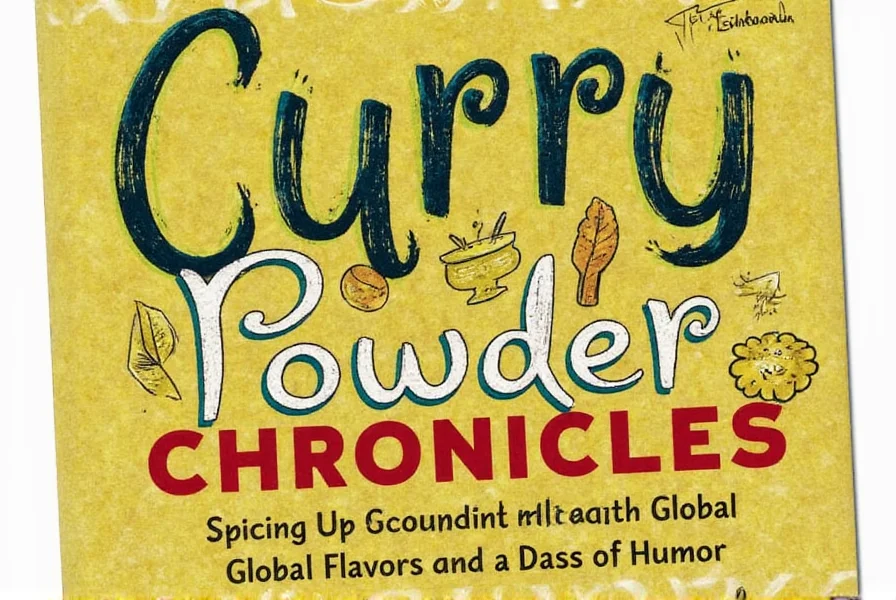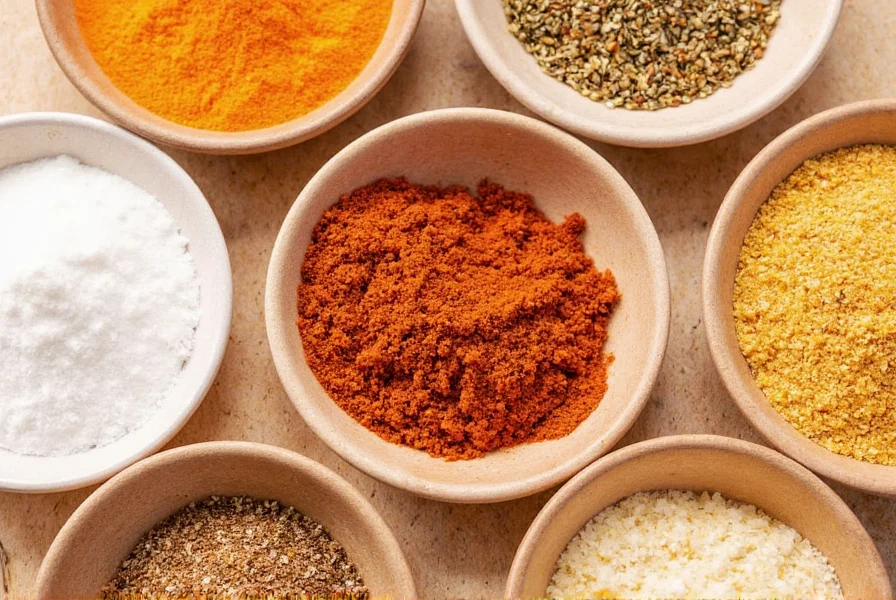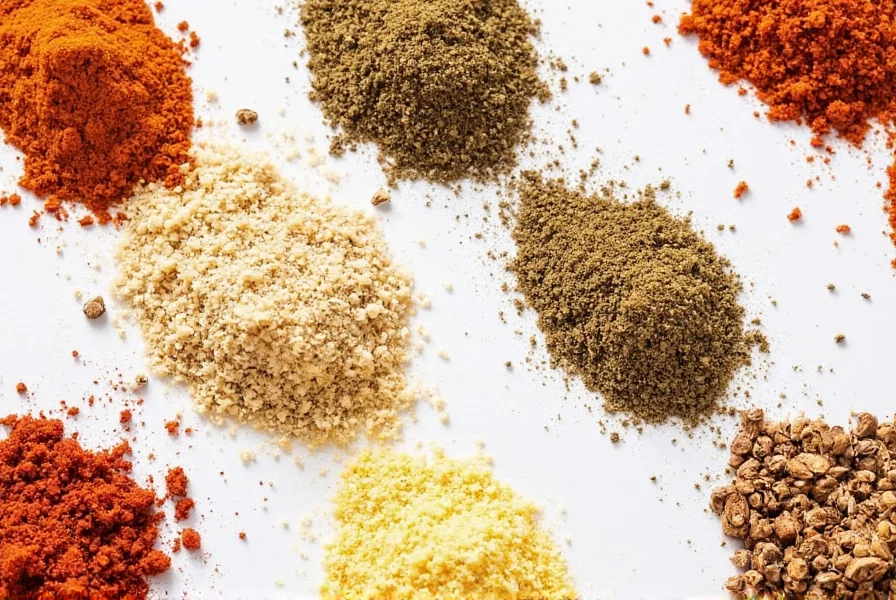Table of Contents
What Is Soup Spice?
Soup spice is a pre-mixed blend of herbs and spices specifically formulated to enhance the flavor of soups, stews, and broths. Unlike single spices, these combinations are curated to work harmoniously in liquid-based dishes, ensuring balanced flavors that develop properly during simmering.
Whether you're making chicken noodle soup, minestrone, or a rich beef stew, the right soup spice blend can transform ordinary broth into a restaurant-quality dish. This guide covers everything you need to know about soup spices—from types and usage tips to buying advice and FAQs—to help you master flavor enhancement in every pot.
Types of Soup Spices
Soup spices vary by cuisine and flavor profile. Here are the most common types:
- Curry Powder: A blend of turmeric, cumin, coriander, and other spices, commonly used in Indian and Southeast Asian soups.
- Mexican Seasoning: Includes chili powder, garlic powder, onion powder, and cumin—perfect for tomato-based soups and chilis.
- Italian Herb Mix: A combination of oregano, basil, thyme, and rosemary, ideal for tomato-based Italian soups like minestrone.
- Chinese Five-Spice: A mix of star anise, cloves, cinnamon, Sichuan peppercorns, and fennel seeds, commonly used in Chinese broths and noodle soups.
- Herbes de Provence: A French blend of lavender, thyme, rosemary, and oregano, great for Mediterranean-style soups and stews.


Top 5 Practical Tips for Using Soup Spice
Follow these proven techniques to maximize flavor in every soup:
- Start Small and Taste Often: Add spices gradually. Begin with 1/2 teaspoon per cup of broth and adjust as needed.
- Use Fresh, High-Quality Blends: Check for vibrant color and strong aroma. Avoid stale or musty-smelling spices.
- Consider Your Soup Base: Tomato-based soups pair well with Italian herbs; creamy soups benefit from nutmeg or smoked paprika.
- Store Properly: Keep in airtight containers away from heat and light to maintain potency for 1-2 years.
- Experiment with Custom Blends: Create your own mix using base herbs (2 tbsp), aromatics (1 tbsp onion/garlic powder), and warming spices (1 tsp cumin/coriander).

Comparison Table: Common Soup Spices
| Spice | Flavor Profile | Best With | Common Use |
|---|---|---|---|
| Curry Powder | Earthy, warm, slightly sweet | Indian, Thai, and South Asian soups | Chicken curry soup, lentil soup |
| Mexican Seasoning | Smoky, spicy, savory | Tomato-based soups, chilis | Tomato soup, bean soup |
| Italian Herb Mix | Herby, aromatic, slightly sweet | Tomato-based Italian soups | Minestrone, tomato bisque |
| Chinese Five-Spice | Complex, sweet, and slightly bitter | Chinese broths, noodle soups | Hot and sour soup, chicken noodle soup |
| Herbes de Provence | Floral, herbaceous, slightly sweet | Mediterranean soups, stews | Vegetable soup, bouillabaisse |
Buying Guide: Choosing the Right Soup Spice
Selecting the perfect soup spice requires considering these key factors:
- Quality Check: Look for vibrant color, strong aroma, and no clumping. Avoid blends with fillers like salt or MSG.
- Blends vs. Single Spices: Pre-mixed blends save time; individual spices offer customization for experienced cooks.
- Origin Matters: Indian curry powder from Kerala has different notes than Thai curry paste. Check country of origin for authenticity.
These spices work across multiple scenarios:
- Home Cooking: Elevate weeknight meals with minimal effort
- Catering: Ensure consistent flavor for large batches
- Special Occasions: Impress guests with restaurant-quality soups
Conclusion
Soup spice is more than a seasoning—it's a flavor transformation tool. By understanding the right blends for your soup type, following proper usage techniques, and selecting high-quality products, you can consistently create delicious, restaurant-quality dishes at home. Start with one blend that matches your favorite soup, experiment with proportions, and soon you'll master the art of soup seasoning.
Frequently Asked Questions About Soup Spice
What is soup spice exactly?
Soup spice is a pre-mixed blend of herbs and spices specifically formulated to enhance the flavor of soups, stews, and broths. Unlike single spices, these combinations are curated to work harmoniously in liquid-based dishes, ensuring balanced flavors that develop properly during simmering.
How is soup spice different from regular spices?
Regular spices are individual seasonings, while soup spice refers to pre-mixed combinations designed specifically for liquid-based dishes. Soup spice blends consider how flavors meld during simmering, whereas regular spices may require careful balancing by the cook.
Can I make my own soup spice blend at home?
Absolutely! Start with 2 tablespoons of dried herbs (thyme, rosemary, or oregano), 1 tablespoon onion powder, 1 tablespoon garlic powder, 1 teaspoon black pepper, and 1 teaspoon of your preferred warming spice (cumin or coriander). Adjust proportions to taste and store in an airtight container.
How much soup spice should I use per serving?
Start with 1/2 to 1 teaspoon per cup of broth. Add gradually while tasting, as flavors concentrate during simmering. Remember: It's easier to add more than to fix an over-spiced soup.
How long do soup spices last before they lose potency?
Properly stored in airtight containers away from heat and light, most soup spice blends maintain potency for 1-2 years. Ground spices lose flavor faster than whole spices. Replace when they lose vibrant color or strong aroma.
Can I use soup spice in dishes other than soup?
Yes! Soup spices work well in roasted vegetables (Italian herb mix), rice dishes (curry powder), meat marinades (Mexican seasoning), and even salad dressings. Their versatility makes them kitchen staples.










 浙公网安备
33010002000092号
浙公网安备
33010002000092号 浙B2-20120091-4
浙B2-20120091-4